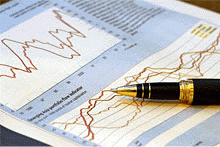

By Roger J Kerr
Potential changes to US monetary policy in response to a flagging US economic recovery dominated the attention of global financial and investment markets from June until this month.
That single event domination of the markets has now ended.
Through that period the USD currency was sold heavily across the foreign exchange markets in anticipation of more supply of US dollars being printed as the Federal Reserve signalled the need for another quantitative easing in monetary policy - the prime policy motivation of the Fed being to reduce the US unemployment rate which was proving to be very sticky at 9.8%.
The Americans are convinced that the correct economic policy prescription is to get consumers spending again through lower mortgage interest rates and more jobs/job security.
In contrast, the Europeans believe the road to economic recovery is through fiscal austerity policies of higher taxes and lower Government spending.
The European policy will do nothing to encourage spending and employment in the private sector.
The above brief economic overview is to set the context in which forex markets will trade over coming months.
The market focus is now firmly away from US monetary policy (the QE2 has long sailed from port!) and solidly on the growing debt/deficit problems in Europe and their inadequacies to deal with them.
The selling of the US dollar has ended and now investors worldwide will be seeking to reduce Euro currency exposures by selling the Euro.
The sentiment and direction of the USD has reversed over the last two weeks as “sell the rumour, buy the fact” has proven to be an accurate description of the market events before and after the QE2.
The EUR/USD rate has dropped from $1.4200 to $1.3500 as short-sold USD positions are unwound. As a consequence, the Kiwi dollar has reversed engines against the improving USD from highs of 0.7990 to 0.7700.
As FX market participants wind down to the end of the year, more book-squaring can be expected which means further buying back of USD’s.
Given the deteriorating sovereign debt situation in Europe and further bouts of negative news, the markets are more likely to sell the Euro again, taking the EUR/USD rate back to the $1.3000/$1.2500 region again. The expected decline in the EUR/USD rate should return the NZD/USD rate back to 0.7000 before the end of the year, or shortly thereafter.
Adding to the probability of a continuation of the NZD pull-back to 0.7000 are unfolding monetary policy changes in China.
The Chinese central bank, the Peoples Bank of China (“PBOC”) raised the reserve asset ratios on the lending banks by a second 0.5% increase in two weeks, lifting the total reserve ratio to 18.5%. Lending and deposit interest rates have also been increased. Together with food price controls and restrictions on commodity speculation, the Chinese authorities are tightening monetary policy to curb rising inflation.
The immediate consequence of this tighter policy has to be a reduction in the strong demand by the Chinese to buy mining and metal commodities. The Chinese want to slow the rampant demand to keep inflation under control.
Commodity prices have already responded with decreases and the same result must come onto the Australian dollar over coming weeks. Metal commodity prices and the Aussie dollar have both had massive run-ups over recent months and again before the end of the year, profit-taking and book-squaring suggest price decreases over coming weeks.
The AUD currency market has also fully priced-in the recent increases in Australian interest rates to return their monetary policy settings to neutral. A weaker AUD against the USD will pull the Kiwi down as we continue to track the AUD closely.
The latest increase in the NZD/AUD cross- rate from 0.7700 to almost 0.7900 is hard to understand as it appears NZ interest rates are staying lower for longer and Australian interest rates were recently increased by the RBA. The 1.75% gap in the two 90-day interest rates suggests a cross-rate closer to 0.7600 over coming months, not 0.7900. The rate of 0.7900 does not appear sustainable given current monetary policy positions in the two economies.
However, in the longer term (over the second half of 2011) the NZD/AUD cross-rate should return to the long-term average level of 0.8500 as NZ interest rates increase to the 5.00% area of Australian rates, thus no interest rate differential favouring the AUD over the NZD.
--------------------
* Roger J Kerr runs Asia Pacific Risk Management. He specialises in fixed interest securities and is a commentator on economics and markets. More commentary and useful information on fixed interest investing can be found at rogeradvice.com
No chart with that title exists.

We welcome your comments below. If you are not already registered, please register to comment
Remember we welcome robust, respectful and insightful debate. We don't welcome abusive or defamatory comments and will de-register those repeatedly making such comments. Our current comment policy is here.